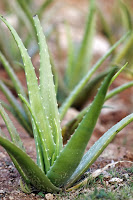Hello Everyone
Today we will talk about the plant which we can grow in our house for home remedies for may disease or common problems.We will talk about very few common plants which you can easily identify and get it easily.This topic is whole way of treatment called ayurveda.
List of plants are
Aloe Vera
Tulsi
Sweet Basil
Neem
Papaya leaves
Bael
Mint
Giloy
Hibiscus
Harsingar
Aloe Vera
also known as ‘Ghritkumari’ in Hindi, ‘Kalabanda’ in Telugu, ‘Katralai’ in Tamil, ‘Kumari’ in Malayalam, ‘Lolisara’ in Kannada, ‘Koraphada’ in Marathi, and ‘Ghrtakumari’ in Bengali
Tulsi
It is a holy plant .Many people worship this plant .It purifies air.
 Sweet Basil
Sweet Basil
Is also known as "Marua" or "Marjoram"
Today we will talk about the plant which we can grow in our house for home remedies for may disease or common problems.We will talk about very few common plants which you can easily identify and get it easily.This topic is whole way of treatment called ayurveda.
List of plants are
Aloe Vera
Tulsi
Sweet Basil
Neem
Papaya leaves
Bael
Mint
Giloy
Hibiscus
Harsingar
Aloe Vera
also known as ‘Ghritkumari’ in Hindi, ‘Kalabanda’ in Telugu, ‘Katralai’ in Tamil, ‘Kumari’ in Malayalam, ‘Lolisara’ in Kannada, ‘Koraphada’ in Marathi, and ‘Ghrtakumari’ in Bengali
- Aloe Vera Juice helps in constipation ,improves digestion and immune system.
- Can be used as moisturizer on skin and hair scalp.
- Helpful on skin rashes or ,irritation,burns and cuts and helpful in stopping bleeding.
- Lowers the risk of cancer
Tulsi
It is a holy plant .Many people worship this plant .It purifies air.
- It helps in curing cough and cold.
- It helps in curing respiratory [problem and fever.
- It helps in reducing the pain caused by measles, chicken pox, and small pox.
- A mixture of basil leaves juice and coconut oil can be applied on cuts and wounds to give relief.
- Chewing a basil leaf or applying the juice of basil leaves on the area stung or bitten by an insect also helps relieve the pain as well as draw the venom out.
- It reduces cholesterol and blood sugar level.
 Sweet Basil
Sweet Basil Is also known as "Marua" or "Marjoram"
- It helps in cough and cold
- it helps in sinusitis
- it helps in menstural problem
Neem
- Neem leaves have anti-bacterial properties which is why it works wonders on infections, burns and any kind of skin problems. It destroys the bacteria that causes infections.
- For eye trouble boil some neem leaves, let the water cool completely and then use it to wash your eyes. This will help any kind of irritation, tiredness or redness.
- Turmeric combined with a paste of neem leaves can also be used for itching, eczema, ring worms and some mild skin diseases.
- Crush some neem leaves and take them with a glass of water to increase your immunity.
- Take some neem oil and rub it into the scalp, leave it in for a while and wash. Neem oil can strengthen your hair, prevent hair fall,grey hairs and treat dandruff.
- You can use neem oil as mosquito repellent.
Rest of the plants we will discuss in next time.














































